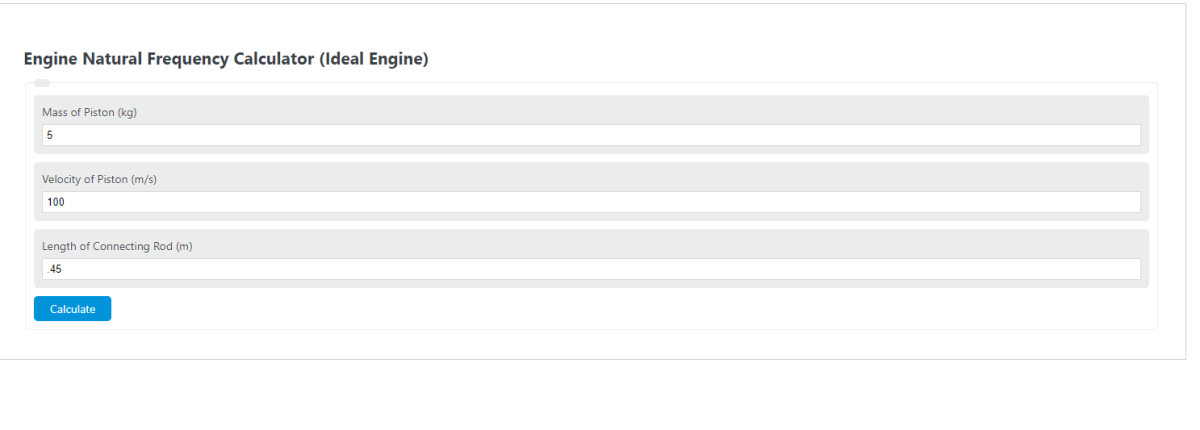Enter the mass of the piston, the velocity of the piston, and the length of the connection rod into the calculator to determine the engine natural frequency.
- Engine Mass Air Flow Calculator
- Engine KW to Wheel KW Calculator
- Natural Frequency Calculator
- Frequency of Oscillation Calculator
- Ride Frequency Calculator
- Heat Engine Work Calculator
Engine Natural Frequency Formula
The following equation is used to calculate the natural .
F = pi * [ (m*v) / (L*g) ]
- Where F is the natural frequency (hz)
- m is the mass of the piston (kg)
- v is the velocity of the piston (m/s)
- L is the length of the connection rod (m)
- g is the acceleration due to gravity (9.8 m/s^2)
What is the natural frequency of an engine?
Definition:
The natural frequency of an engine is the frequency at which it vibrates when no external forces are acting on it. Since internal combustion engines are inherently complex machines, their natural frequencies vary greatly.
The mass and stiffness of a car’s frame (as well as its air resistance) will also affect how much energy is lost as heat, and the resulting temperature rise in the engine.
The natural frequency of an engine depends on various factors. The following factors are listed by decreasing importance.
- Engine Block Material: Aluminum and cast iron blocks have higher natural frequencies than do steel blocks.
- Number of Cylinders: More cylinders mean a lower natural frequency.
- Piston Diameter: Generally, the larger the piston diameter, the lower the natural frequency.
- Connecting Rod Length: The longer the connecting rod length, the lower the natural frequency.
- Length-to-Diameter Ratio: The shorter the stroke (distance between top dead center and bottom dead center), the higher the natural frequency. The longer the stroke, the lower the natural frequency.
- Compression Ratio: The higher the compression ratio, the lower the natural frequency.
- Engine Speed: As engine speed increases, so does its natural frequency. However, engine speed has a less significant effect on natural frequency as compared to some of these other factors that I have listed above
